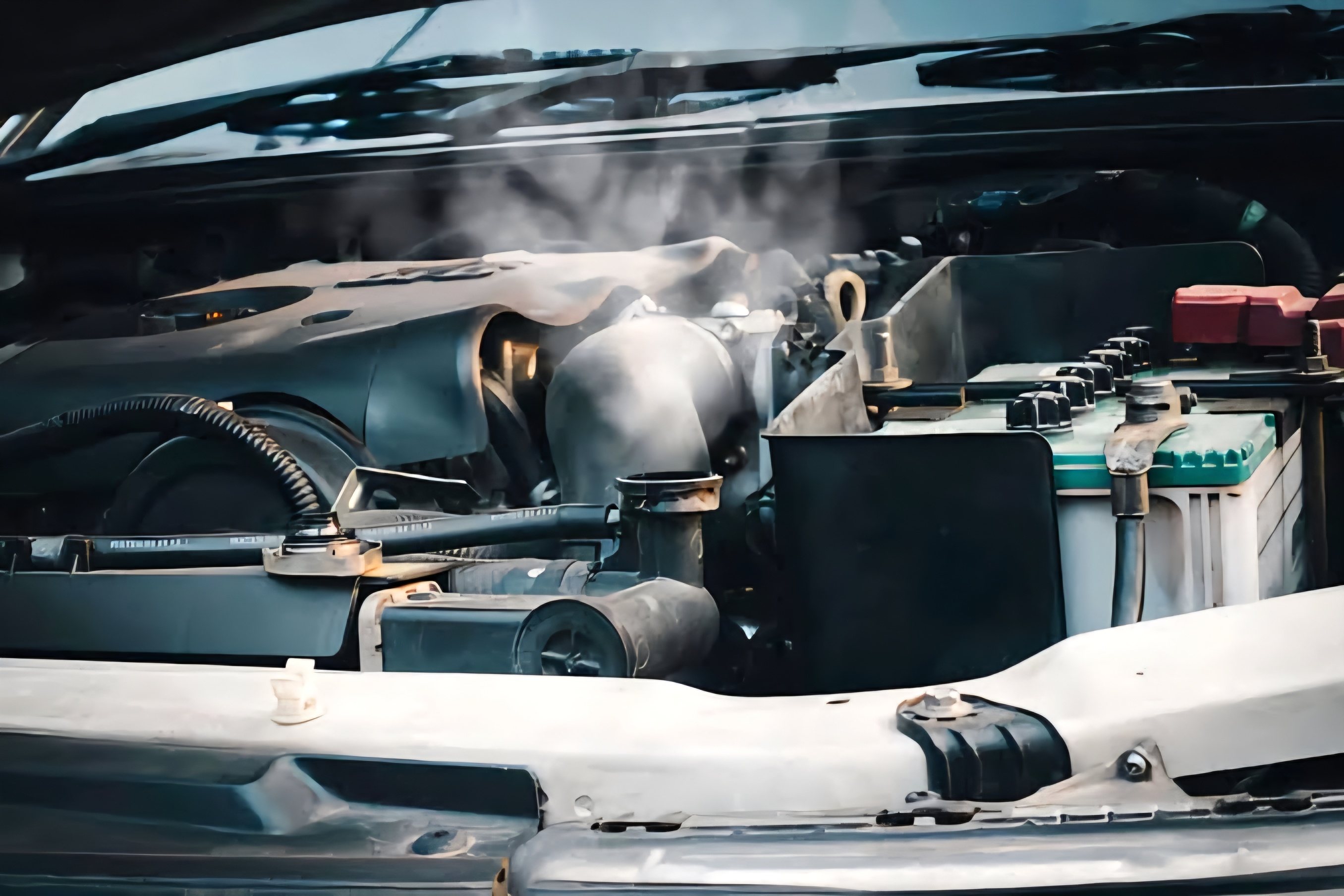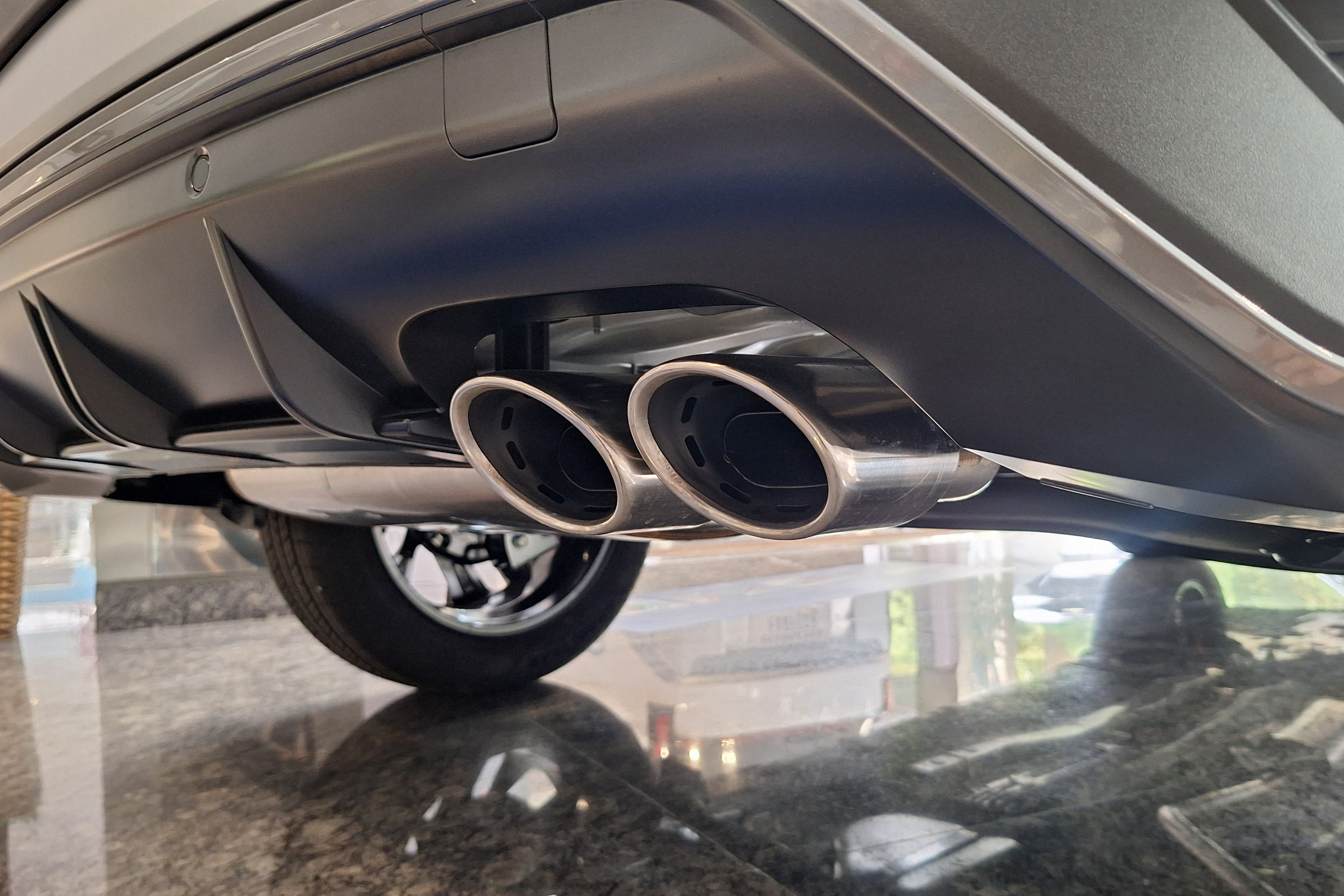Engine Overheating? Here's How to Deal with It Safely and Effectively
Overheating is often a nightmare for drivers. This problem can cause the car to suddenly break down in the middle of the road, smoke to come out of the hood, and if left unattended, it can damage expensive components such as the cylinder block or cylinder head gasket.
So it is very important to know why overheating can occur, what the symptoms are, and how to deal with it quickly and safely.
Signs of Car Overheating
A car engine typically operates at an ideal temperature of around 85–90°C and is not affected by external temperatures. Each manufacturer may have different temperature specifications. At this point, combustion occurs efficiently and lubrication is optimal. However, if the cooling system fails to maintain a stable temperature, heat will build up and cause metal components to expand, which can ultimately lead to severe engine damage.
Some common signs of overheating:
- The temperature gauge on the dashboard rises sharply
- The temperature indicator light turns red
- The engine feels strained and has heavy acceleration
- A burning smell or steam coming from the engine hood
Causes of Overheating
An engine can overheat because the cooling system is not functioning properly. Here are some common causes:
- Low or Empty Coolant - The radiator requires a special fluid (coolant) to absorb and release heat. If the coolant level is low or there is a leak, heat will build up inside the engine.
- Malfunctioning Radiator Fan - The fan helps dissipate heat from the radiator. If it stops working or becomes weak (usually due to a faulty fan motor or fuse), the temperature will rise sharply.
- Stuck Thermostat - This small component regulates when coolant can flow. If it's damaged, the coolant flow can be completely blocked.
- Leaking Cooling System - Cracked radiator hoses or loose clamps can cause coolant leaks. Sometimes it's not immediately visible, so regular checks are necessary.
- Excessive Driving Style - Continuous uphill driving, prolonged high speeds, or carrying heavy loads cause the engine to work extra hard and overheat quickly.
Engine Already Overheated? Here Are the Emergency Steps
1. Pull Over Immediately and Turn Off the Engine
- Find a safe spot on the side of the road. Do not continue forcing the car to move, as this can worsen the damage.
- Do not immediately open the hood. Wait 10–15 minutes for the temperature to drop and pressure to decrease.
2. Let the Engine Cool Down
- Check the temperature gauge. Once it returns to normal, slowly open the hood.
3. Check the Coolant
- Open the radiator reserve tank cap (not the main radiator cap while the engine is hot!).
- Top up with coolant if low, or clean water in an emergency. However, remember that coolant is still the most ideal option.
4. Check the Fan and Fuse
- Start the engine. If the fan does not turn on despite high temperatures, there may be an electrical issue.
5. Check for Leaks
- Look under the car for any signs of drips or pools of water/coolant. If there is a leak, take it to the workshop immediately. Do not delay.
6. Change Driving Style
- Reduce speed, avoid sudden braking and acceleration, and use the AC sparingly to avoid overloading the engine.
Prevention Tips to Prevent the Engine from Overheating
- Regularly Replace Coolant: Ideally every 20,000–40,000 km or as recommended by the manufacturer.
- Inspect the Radiator, Hoses, and Cap: Ensure there are no cracks, loose connections, or leaks.
- Regular Maintenance: Routine inspections can detect issues before they become severe.
- Use High-Quality Coolant: Tap water can cause scale and corrosion. Choose coolant according to your vehicle’s specifications.
- Avoid Pushing the Vehicle in Extreme Conditions: For example, climbing steep hills while carrying heavy loads without proper preparation.
Conclusion
Overheating is not a minor issue, but it's also not the end of the world. With the right understanding, you can respond more quickly when symptoms appear, prevent further damage, and keep the engine healthy in the long run. And most importantly: don't wait until the car breaks down in the middle of the road. Maintain your cooling system properly, and drive wisely.
Indonesia 🇮🇩
Mesin Mobil Overheat? Begini Cara Aman dan Efektif Menanganinya
Overheat sering kali jadi momok buat pengemudi. Masalah ini bisa bikin mobil tiba-tiba mogok di tengah jalan, keluar asap dari kap mesin, bahkan kalau dibiarkan bisa merusak komponen mahal seperti blok silinder atau gasket kepala silinder.
Jadi penting banget buat tahu kenapa overheat bisa terjadi, apa saja gejalanya, dan gimana cara menanganinya dengan cepat dan aman.
Tanda-Tanda Mobil Overheat
Mesin mobil rata-rata bekerja di suhu ideal sekitar 85–90°C dan tidak terpengaruh suhu dari luar. Setiap pabrikan mungkin berbeda (suhunya). Di titik ini, pembakaran berlangsung efisien dan pelumasan optimal. Tapi kalau sistem pendingin gagal menjaga suhu tetap stabil, panas akan menumpuk dan menyebabkan komponen logam memuai, yang ujung-ujungnya bisa bikin mesin rusak berat.
Beberapa tanda overheat yang sering muncul:
- Indikator suhu di dashboard naik tajam
- Lampu indikator suhu menyala merah
- Mesin terasa ‘ngos-ngosan’ dan tarikan berat
- Bau gosong atau keluar uap dari kap mesin
Penyebab Overheat
Mesin bisa overheat karena sistem pendinginnya nggak bekerja sebagaimana mestinya. Ini beberapa penyebab umumnya:
- Coolant Kurang atau Habis - Radiator butuh cairan khusus (coolant) untuk menyerap dan melepas panas. Kalau isiannya kurang atau bocor, panas akan tertahan di dalam mesin.
- Kipas Radiator Bermasalah - Kipas bertugas bantu membuang panas dari radiator. Kalau mati atau lemah (biasanya karena motor kipas atau sekring rusak), suhu langsung naik drastis.
- Thermostat Macet - Komponen kecil ini ngatur kapan coolant boleh mengalir. Kalau rusak, aliran pendingin bisa terhambat total.
- Sistem Pendingin Bocor - Selang radiator getas atau klem longgar bisa menyebabkan coolant rembes. Kadang nggak langsung kelihatan, jadi harus dicek rutin.
- Gaya Mengemudi yang Berlebihan - Nanjak terus-menerus, ngebut lama, atau membawa beban berat bikin mesin kerja ekstra keras dan cepat panas.
Mesin Terlanjur Overheat? Ini Langkah Daruratnya
1. Segera Menepi dan Matikan Mesin
- Cari tempat aman di pinggir jalan. Jangan terus memaksa mobil jalan, ini bisa bikin kerusakan tambah parah.
- Jangan langsung buka kap mesin. Tunggu 10–15 menit sampai suhu turun dan tekanan berkurang.
2. Biarkan Mesin Dingin
- Periksa indikator suhu. Kalau sudah kembali normal, baru buka kap mesin secara perlahan.
3. Cek Coolant
- Buka tutup tabung cadangan radiator (bukan tutup radiator utama saat mesin panas!).
- Isi kembali dengan coolant jika kurang, atau air bersih kalau darurat. Tapi ingat, coolant tetap yang paling ideal.
4. Periksa Kipas dan Sekring
- Nyalakan mesin. Kalau kipas nggak menyala meski suhu tinggi, kemungkinan ada gangguan kelistrikan.
5. Cek Tanda Kebocoran
- Lihat bawah mobil, cari bekas tetesan atau genangan air/coolant. Kalau bocor, langsung bawa ke bengkel. Jangan ditunda.
6. Ganti Gaya Mengemudi
- Kurangi kecepatan, hindari rem dan gas mendadak, dan gunakan AC seperlunya agar beban mesin tidak berlebih.
Tips Pencegahan Biar Mesin Nggak Gampang Overheat
- Rutin Ganti Coolant: Idealnya tiap 20.000–40.000 km atau sesuai rekomendasi pabrikan.
- Periksa Radiator, Selang, dan Tutupnya: Pastikan tidak retak, longgar, atau bocor.
- Servis Berkala: Pemeriksaan rutin bisa mendeteksi masalah sebelum jadi parah.
- Gunakan Cairan Pendingin Berkualitas: Air keran bisa menyebabkan kerak dan korosi. Pilih coolant sesuai spesifikasi mobil kamu.
- Jangan Paksa Mobil di Kondisi Ekstrem: Misalnya nanjak curam saat bawa muatan berat tanpa persiapan.
Kesimpulan
Overheat bukan masalah kecil, tapi juga bukan akhir dari segalanya. Dengan pemahaman yang benar, kamu bisa merespons lebih cepat saat gejala muncul, mencegah kerusakan lebih parah, dan menjaga mesin tetap sehat dalam jangka panjang. Dan yang paling penting: jangan tunggu sampai mobil ngambek di tengah jalan. Rawat sistem pendinginmu dengan baik, dan mengemudilah dengan bijak.






